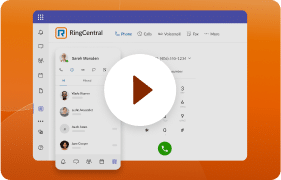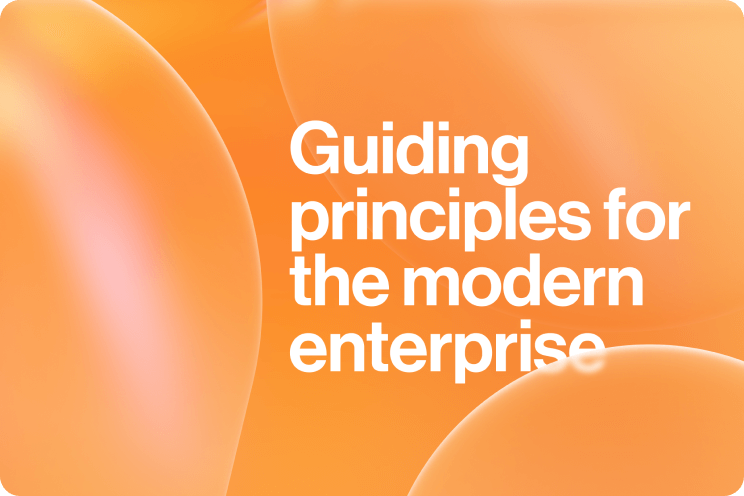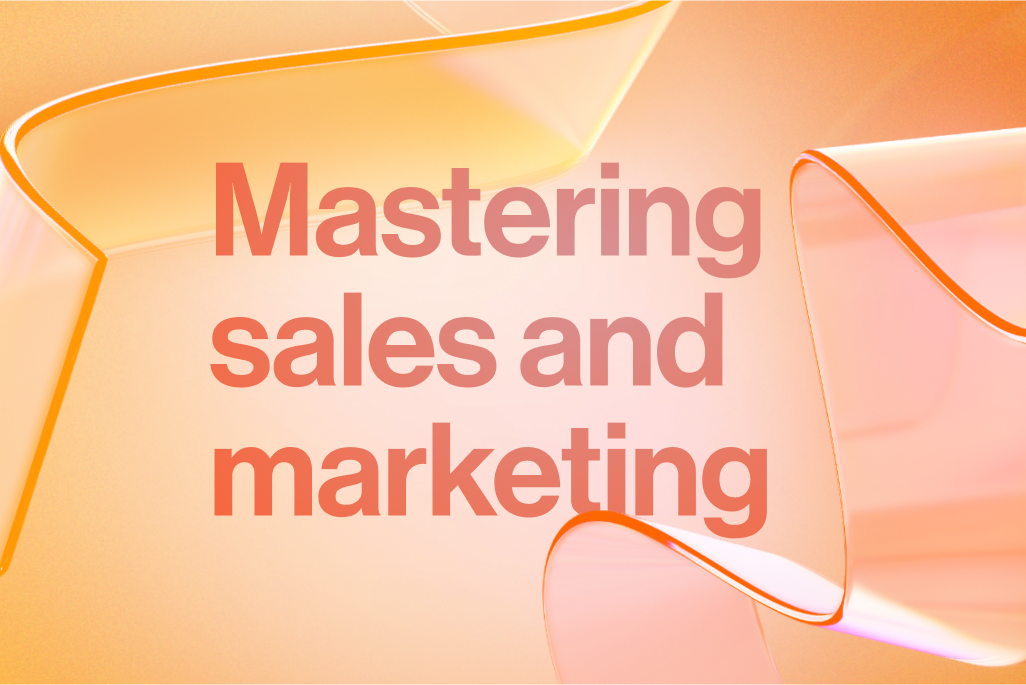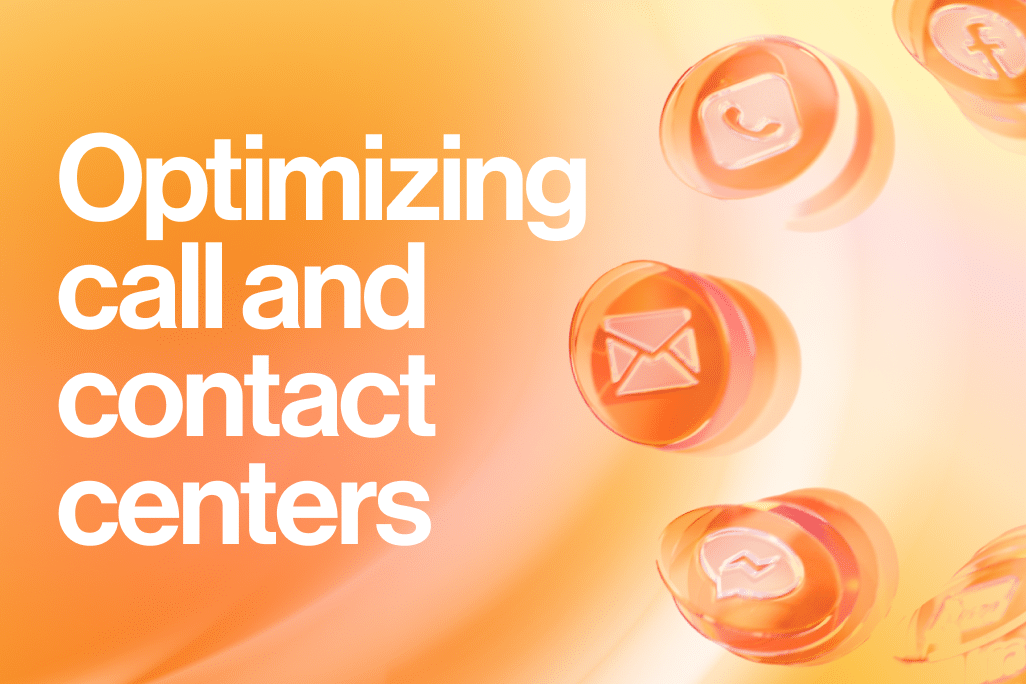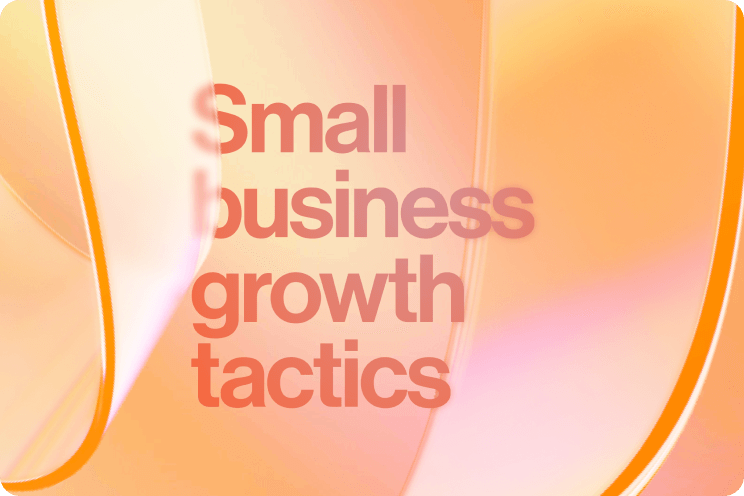Consider all the channels through which customers and potential clients learn about your business. As a small business owner, you have a unique advantage: substantial control over your information flow.
You determine where and how you advertise, the content of your communications, and the core message you wish to convey. This forms the foundation of your messaging strategy. In this blog, we’ll guide you on how to craft an effective messaging strategy that resonates with your audience and drives engagement.
In this post, we’ll look at:
- What a messaging strategy is
- The 4 essential elements of a messaging strategy
- The benefits of a messaging strategy
- 4 real-life examples of messaging strategies
- How to create your own messaging strategy

What is a messaging strategy?
A messaging strategy is the key to successfully marketing your business. It’s how you position yourself, it’s your communication methods, and it influences every bit of text connected to your business, from in-store signage and advertising to customer support emails and web copy.
Your messaging strategy helps you build brand awareness and informs your customers about who you are as a business—and it just might be a deciding factor in whether or not they choose to support you. So it’s important to construct it with care: think about your overarching message, how you want to market yourself, and how you want to develop your messaging over time.
4 essential elements of a messaging strategy
When you first start building your messaging strategy, there will be many factors to consider. Don’t get overwhelmed—begin with the essentials and build from there. Here are four key areas to focus on right from the start.
1. Distinguishing factors
What sets your business apart from the competition? Identify the unique elements that make your business stand out.
Consider this from your customers’ perspective. Why should they choose your business over others? What unique value do you offer?
Your distinguishing factors could be anything from exceptional customer service and ethical business practices to high-quality products. For instance, M&Ms have been recognized for their slogan, “Melts in your mouth, not your hand,” since 1949. This unique selling point has made them memorable and relatable, emphasizing their advantage over messy, melted chocolate.
Without a clear unique selling point, your messaging strategy is unlikely to be effective. Highlight your distinguishing factors and integrate them into your brand identity.
Stay informed with RingCentral
2. A stated goal
What do you aim to achieve with your business, and how do you communicate that to your customers?
A generic goal like “generate profit” is not compelling enough for a meaningful marketing objective, especially in today’s market where consumers are more globally conscious and drawn to businesses with a clear purpose. When your purpose resonates with customers, it benefits both them and your business.
Take Mozilla Firefox as an example. Despite not being backed by a major tech corporation, it remains the world’s third most popular internet browser. Mozilla’s goals are transparent: “… to ensure the Internet is a global public resource, open and accessible to all… where individuals can shape their own experience and are empowered, safe, and independent.” Their commitment to online privacy and security has cultivated a loyal following, demonstrating the power of a well-defined goal.
3. An understanding of your target audience
Just as customers need to understand your goals, you need to understand your customers. Gathering as much information as possible about your target audience will help refine your messaging strategy to effectively reach them.
Defining a target audience can be challenging, but starting too broad can hinder the effectiveness of your strategy. Tesla is a prime example of a company that began with a narrow target market. Their first vehicle, the Tesla Roadster, was aimed at wealthy, environmentally-conscious individuals who desired a luxury electric car. As Tesla’s brand grew, their target audience expanded, allowing them to produce more affordable models like the Model 3, now the top-selling electric car worldwide.
By understanding its customers, Tesla was able to scale its business exponentially.
4. A compelling story
Your business was founded for a reason, so share that story. The narrative behind your company can help customers form a deep emotional connection with your brand.
Incorporate your story into your messaging strategy—it represents your origins, current activities, and future aspirations. Personalizing your business in this way can strongly resonate with your target audience.
Compelling stories evoke emotions. Take Toms Shoes, for example. The company’s founder traveled to Argentina in 2006, where he encountered severe poverty, particularly the lack of shoes.
This experience inspired him to create a sustainable, for-profit business that didn’t rely on donations. Since then, this story has been a cornerstone of Toms Shoes’ messaging strategy. For every pair of shoes sold, Toms donates a pair, resulting in over 88 million pairs donated to date.
The benefits of a messaging strategy
From the elements discussed above, you should already see the power of a good messaging strategy. Marketing yourself without a unified strategy could end up alienating potential customers: they might end up confused about the purpose of your brand. At worst, you could be seen as incoherent. But the impact of a good and cohesive strategy will go beyond what we’ve already talked about to empower all aspects of your business.
When you’re creating marketing materials, whether they’re emails, signs, coupons, or something else, your messaging strategy will guide you towards what to focus on and what tone of voice to use. If you’re writing blog articles or planning a social media campaign, you’ll know how to speak to your customers in a way that catches their attention.
A good messaging strategy also helps with customer service teamwork. Educating customers using consistent language is easier when you can speak to them in a way that you know they’ll understand.
And, just as importantly, it will help you outside the workplace. Imagine yourself at a dinner party. You’re witnessing an interaction between two strangers who are getting to know each other. One says something like, “So what do you do for work?” The other person reacts in one of two ways:
- They smile or laugh awkwardly and launch into a long-winded explanation that loses the interest of whoever’s listening.
- They give a short and concise explanation, so the conversation can either continue or change topics.
Which would you rather be? As a small business owner, you’re representing your business at all times. So whenever questions like, “What do you do?” come up, you’ll know exactly what to say and how to explain it.
4 examples of unique messaging strategies
Here are some real-world examples of brand and marketing messaging examples, from slogans and campaigns to digital strategies.
1. Nike
Industry: Sports apparel and equipment
Location: Worldwide
Messaging strategy: Spark a desire to exercise in customers of all fitness levels, from first-timers to serious athletes
Nike’s messaging is tough, straightforward, and motivational without being pandering. Their most famous campaign of all time, which first launched in 1988, created one of the most recognizable retail slogans out there. Maybe you know it?
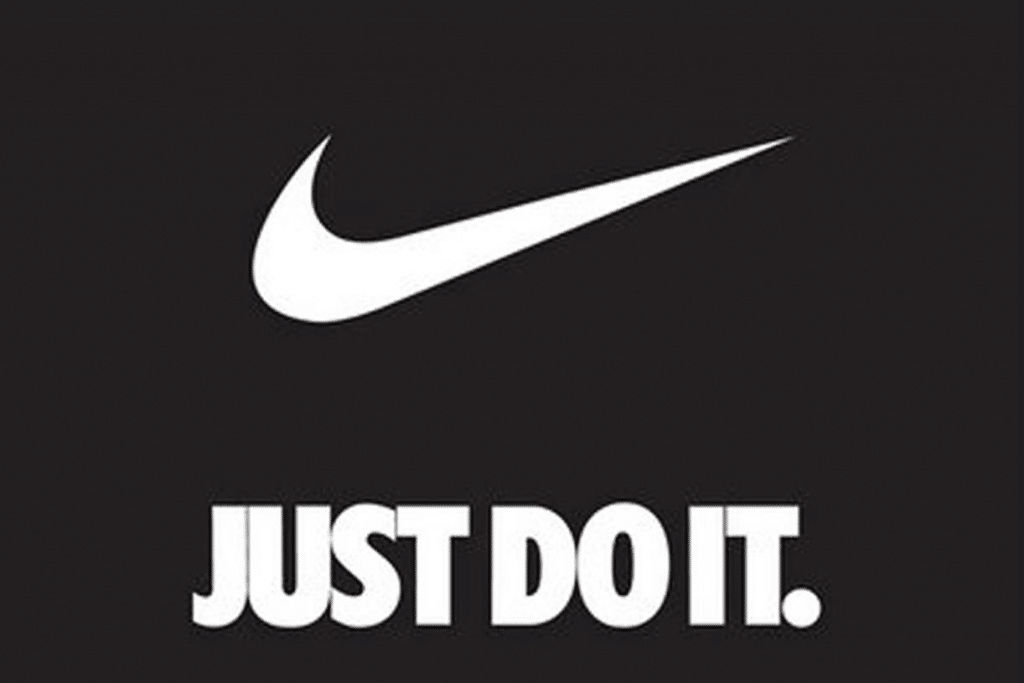
The entire brand strategy revolves around this line. It works because “Just Do It” speaks to everyone: it’s a no-nonsense statement, whether you’re a casual gym-goer or a professional athlete. Nike credits their messaging strategy for helping them grow their sales worldwide by over $8 billion from 1988 to 1998.
2. Levenfeld Pearlstein
Industry: Legal
Location: Chicago
Messaging strategy: Create a huge holiday initiative to both help a community organization and differentiate the firm from other companies
Levenfeld Pearlstein, a Chicago-based law firm, won first place in the 2017 Legal Marketing Association’s messaging strategy awards category thanks to an inventive approach to greeting cards. During the holiday season, Levenfeld Pearlstein sent out lockboxes instead of the usual envelopes.
To open the lockbox, recipients watched a two-minute video about the Chicago Community Kitchen, which helps underemployed people find work in the food industry and provides meals for low-income individuals. The video explained the purpose of the Chicago Community Kitchen, and showed participants making chocolate bark. The unlock code for the box was given at the end of the video. Upon unlocking, viewers found the same chocolate bark that they had just watched being made.
By leveraging a unique mix of old-fashioned tech and digitalization, this move went above and beyond the usual holiday greeting, and resulted in a huge burst of donations for the Chicago Community Kitchen. With this strategy, Levenfeld Pearlstein greatly benefitted an important community organization and created holiday goodwill all around.
3. Pharmacy2U
Industry: Healthcare
Location: The United Kingdom
Messaging strategy: Introduce a new communication tool to better interact with and serve patients
Pharmacy2U is an online pharmacy based in the UK. Through a partnership with Britain’s National Health Service, Pharmacy2U delivers repeat prescriptions to homes of hundreds of thousands of customers.
As of 2018, they were adding roughly 7,000 new customers per week. As a fully internet-based company, Pharmacy2U needed to show that they were able to keep up clear communications and a high degree of customer service.
To do that, they decided to use RingCentral Contact Centre™, an omnichannel customer service solution that lets customers choose their preferred method of communication, whether that’s voice, chat, SMS, or email. The platform comes with self-service options to help patients connect with the best possible advisor and includes tools to optimize Pharmacy2U’s staff scheduling and call centre efficiencies.
A messaging strategy isn’t just about the text and copy used—it’s also how a company chooses to communicate with their customers. By streamlining communications, Pharmacy2U showed patients that they care about having a fully customer-centric business, and they’ve seen an 80% increase in prescriptions filled from 2018 to 2019.
4. PayPal
Industry: Financial technology
Location: Worldwide
Messaging strategy: Differentiate themselves from their former parent company (and other payment companies) by highlighting innovation
In 2015, it was announced that PayPal would split off from their parent company, eBay. Eager to differentiate themselves from their former owner, PayPal launched their “New Money” campaign in 2016, premiering their first-ever TV ad during Superbowl 50:
“New Money” showcased PayPal’s messaging strategy: that their payment method is unhindered by time zones or technological restrictions. PayPal is all about being forward-thinking and leaving limitations behind. “New Money” is inclusive and available to all, in contrast to “old money,” which is portrayed in the ad as archaic and out of touch.
“New Money” was well-received and helped PayPal distinguish themselves as a key player in finance. As of 2019, PayPal sits at number 204 on the Fortune 500.
How to create your own messaging strategy in 5 steps
So, you’ve got your four essential elements of a messaging strategy, and you can see the importance of it. But pulling one together is still a big task. Don’t worry—here’s a step-by-step guide to creating your own messaging strategy.
1. Create a guide
Your messaging strategy needs to be outlined in a guide. This guide should contain your unique selling point, your company goals, information about your target audience, and your company’s story. Slogans or taglines also go in here.
In addition, your guide should contain style instructions, such as tone of voice. Do you want to keep things positive in communications and avoid negativity as much as possible? Or maybe you want to name-check competitors and industry big fish to show that you can do it better. Collect ideas and let the best ones win.
Of course, once you’ve created your guide, it has to be easily accessible to you and your workforce. Otherwise, it won’t be used. Apps like RingCentral are built for file sharing and collaboration. Your guide will evolve as time goes on, so your team needs to be able to read it, comment on it, and edit it whenever it needs to be updated:
2. Manage your messaging channels
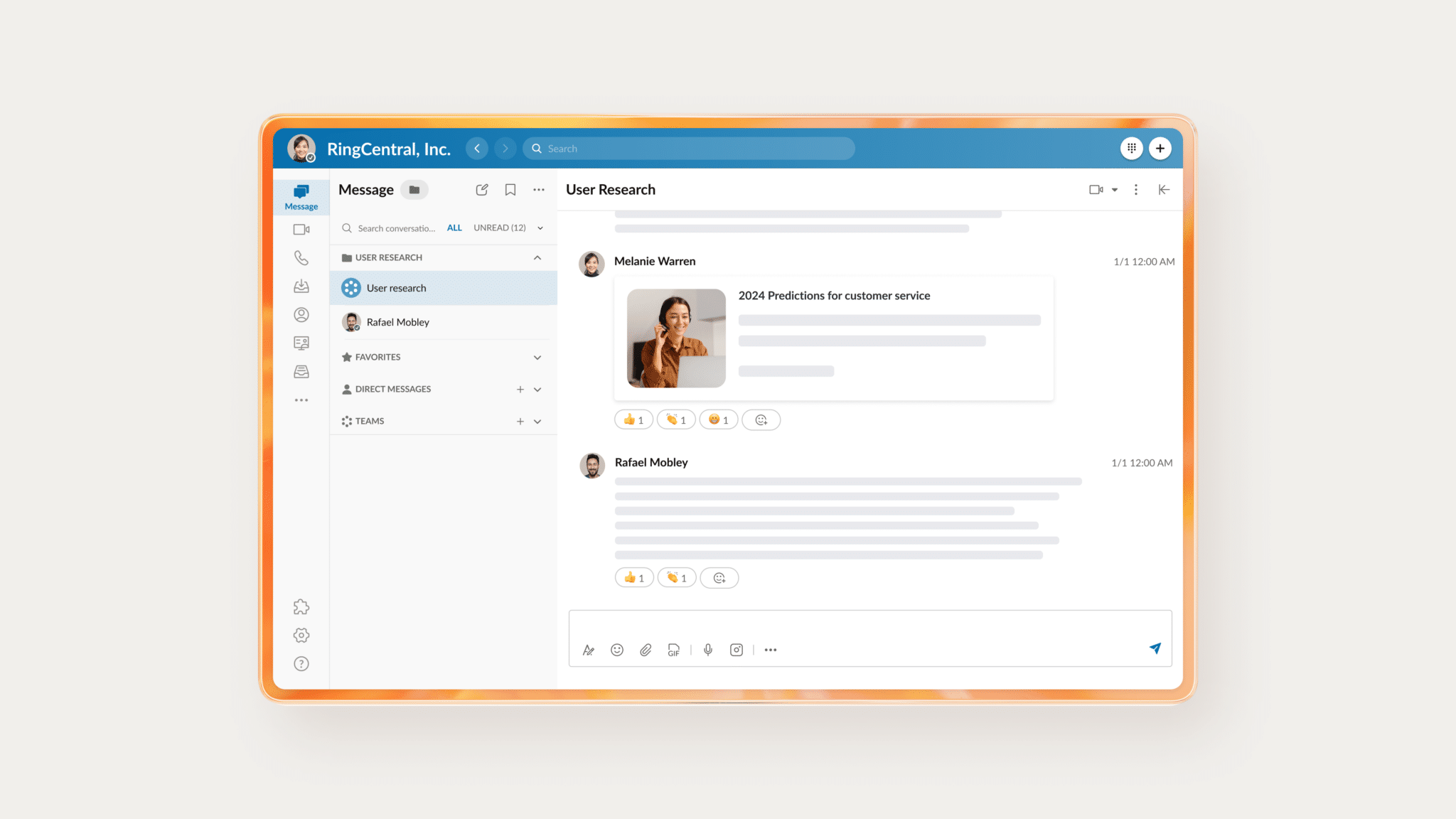
With RingCentral Engage Digital™, you can combine messages from all digital channels, from those mentioned above to Apple Business Chat, WeChat, in-app messaging, and more. It even lets you merge customer identities from multiple platforms into a single profile to help you personalize your customer’s experience even further.
If you’re using SMS to talk to customers, RingCentral’s Business SMS can also help you to manage communications by enabling you to text seamlessly across your smartphone, tablet, desktop, or Apple Watch. Automated text messages are another great way to reflect your brand’s personality—reminder texts are important, and you know your customers are going to read them.
3. Evaluate Each Communication Before Sending
In an age of information overload, it’s crucial to consider your communications from the customer’s perspective before hitting send. Ask yourself: as a customer, is this something I would want to read? What value does it offer me?
If you struggle to answer these questions, it might be time to rethink the content you’re about to send. Every communication should have a clear purpose, whether it’s sharing news, offering deals, or providing useful information, rather than just reminding customers of your business’s existence. Remember, nobody likes spam.
4. Continuously Research Your Target Audience
Every interaction is an opportunity to learn more about your customers. Utilize tools like Google Analytics and Facebook’s Audience Insights to gather data on your audience. Additionally, RingCentral Engage Digital can track your performance across various channels to provide a comprehensive view.
Tailoring your communications to different audience segments can also be highly effective. As your business evolves, so may your target audience. Embrace these changes and ensure your messaging stays relevant—generic messages won’t always resonate with a diverse audience.
5. Embrace Feedback
Work collaboratively with your team to continually refine your messaging strategy, and be open to feedback from both your team and your customers. Not every initiative will succeed—some ads might miss the mark, emails might go unanswered, or campaigns could fall flat.
Don’t be discouraged by setbacks. View critical feedback as an opportunity to enhance your messaging strategy. How you handle and implement feedback can also reflect positively on your brand, demonstrating your commitment to improvement and customer satisfaction.
Know yourself, and know your messaging strategy
Crafting a powerful messaging strategy is more than just a business necessity; it’s the heart and soul of your brand’s communication. By defining clear goals and understanding your unique value proposition, you set the stage for meaningful connections with your audience. A well-thought-out messaging strategy not only conveys your brand’s story but also resonates on a personal level, fostering loyalty and trust.
Start by identifying what sets your business apart and make this the cornerstone of your messaging. Ensure every piece of communication serves a purpose and adds value from the customer’s perspective. Tailor your messages to fit the needs and preferences of your diverse audience, and never underestimate the power of a compelling narrative to create emotional bonds.
Moreover, embrace the tools and technologies that can help you streamline and enhance your communications. Platforms like RingCentral Engage Digital can provide valuable insights and help you maintain a cohesive strategy across multiple channels. Staying informed about your audience’s evolving preferences and being open to feedback will keep your messaging relevant and effective.
Remember, a successful messaging strategy is not static; it evolves as your business grows and market dynamics shift. Regularly revisit and refine your approach to ensure it continues to align with your goals and resonate with your audience.
In conclusion, knowing yourself and understanding your messaging strategy is crucial for long-term success. A compelling story, paired with the right tools and a customer-centric approach, will not only differentiate your brand but also create lasting connections with your customers. Invest the time and effort into building and maintaining a robust messaging strategy, and you’ll see the profound impact it can have on your business and brand reputation.
Originally published Mar 02, 2020, updated Mar 13, 2025
